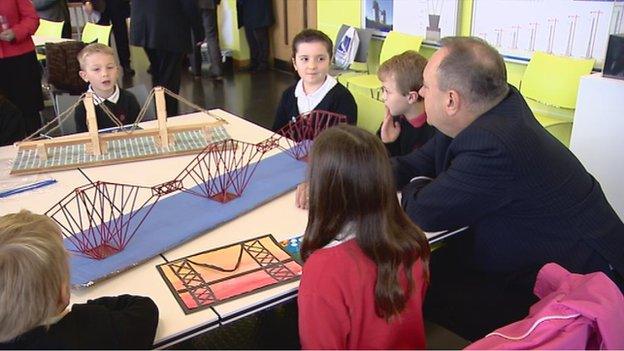Games and apps created using 3D scans of Forth bridges
- Published
Travel the Forth Bridge in full 3D
Interactive games, apps and virtual reality tours are to be created using detailed 3D scans of the Forth bridges.
A £300,000 digital scanning project was announced in 2014.
The road and rail bridges, and new Queensferry Crossing, were mapped on foot, using ropes and from vehicles and boats, over a 90-day period - with billions of images amassed.
The information gathered will form the basis of technology aimed at promoting engineering skills for school children.
Transport Scotland has provided a grant of £425,000 to enable digital heritage experts to start work on learning games, augmented reality apps, real-time interactive models for virtual headset tours and video fly-throughs for release in 2018.
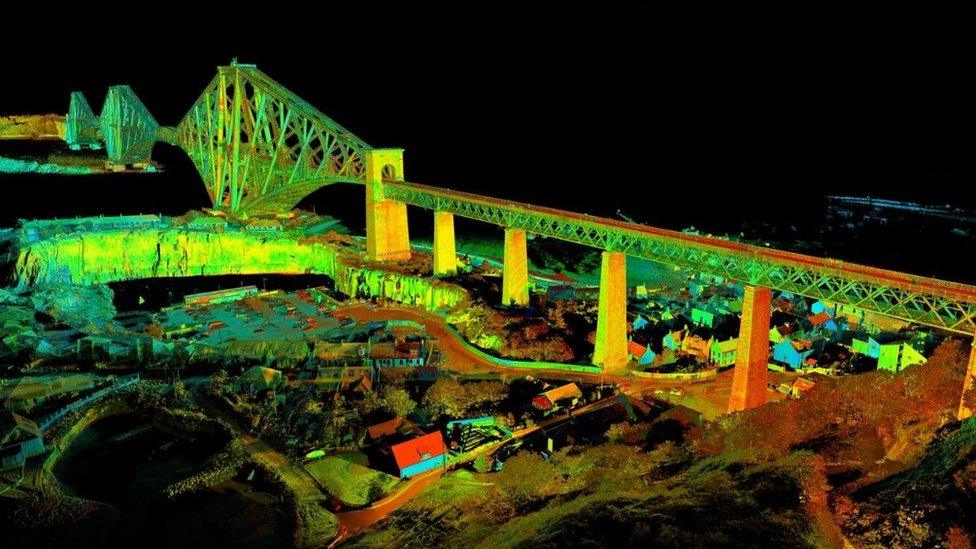
Billions of images were gathered as part of the scanning project
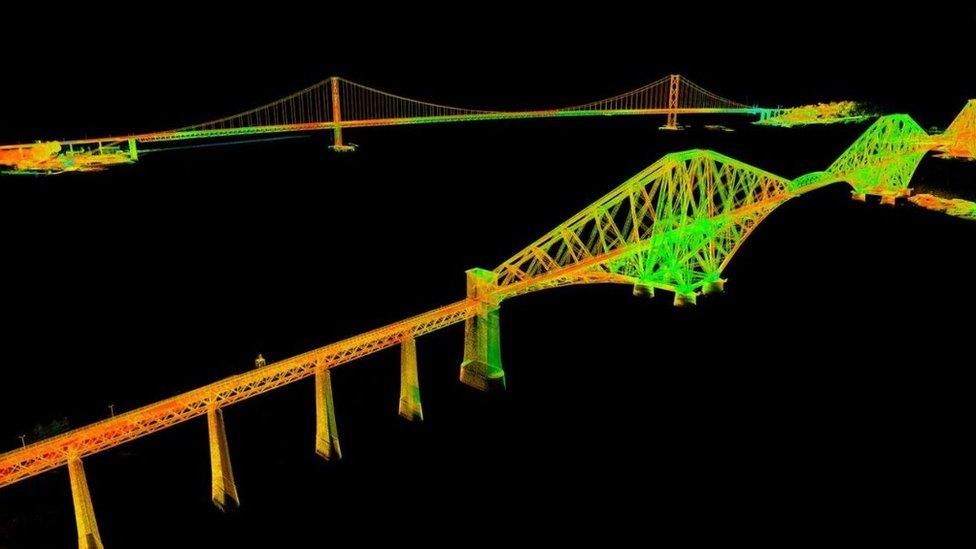
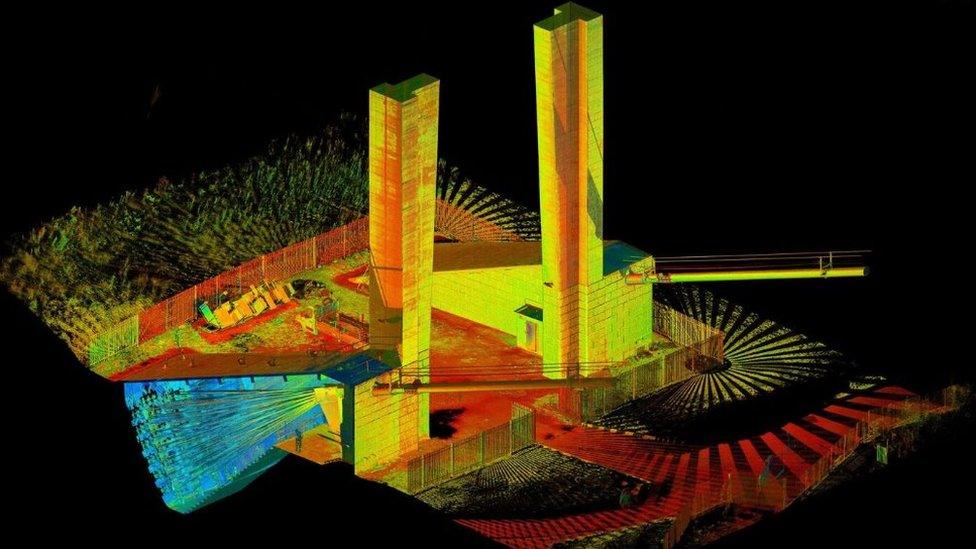
They will be used to develop Stem (science, technology, engineering and maths) skills among Scottish school pupils.
Transport Minister Humza Yousaf said: "The Forth bridges represent Scotland's industrial past, creative present and our dynamic and innovative future. They are the pinnacle of world-leading design and engineering and it's right that we conserve and protect them and also seek to inspire and educate the young engineers of the future.
"If the bridges are a globally unique showcase of Scotland's world-class engineering skills, this amazing 3D scanning project also showcases the world-leading design, research and innovation in our higher education institutions.
"The possibilities for this comprehensive digital data are almost endless. It allows the production of detailed information and tools for conservation, educational resources, improving accessibility and delivering virtual records to help health and safety training as well as promoting tourism."
The laser scanning was carried out by the Centre for Digital Documentation and Visualisation, a partnership between The Glasgow School of Art and Historic Environment Scotland.
The team had previously carried out similar work on the Sydney Opera House and Mount Rushmore in the US.
Animations of the bridges, which will form part of the 2018 education resource, have already been released.
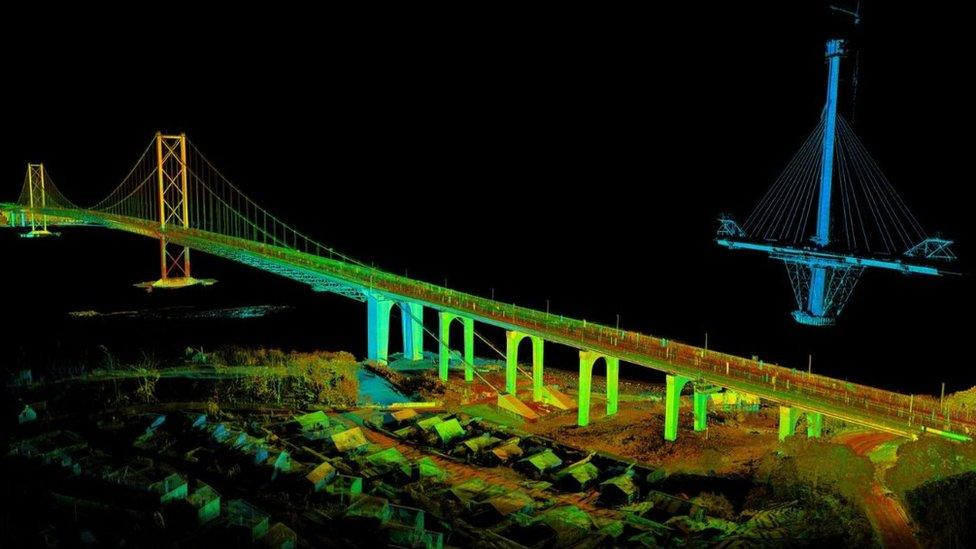
The scans were carried out using ropes, on foot and from vehicles and boats
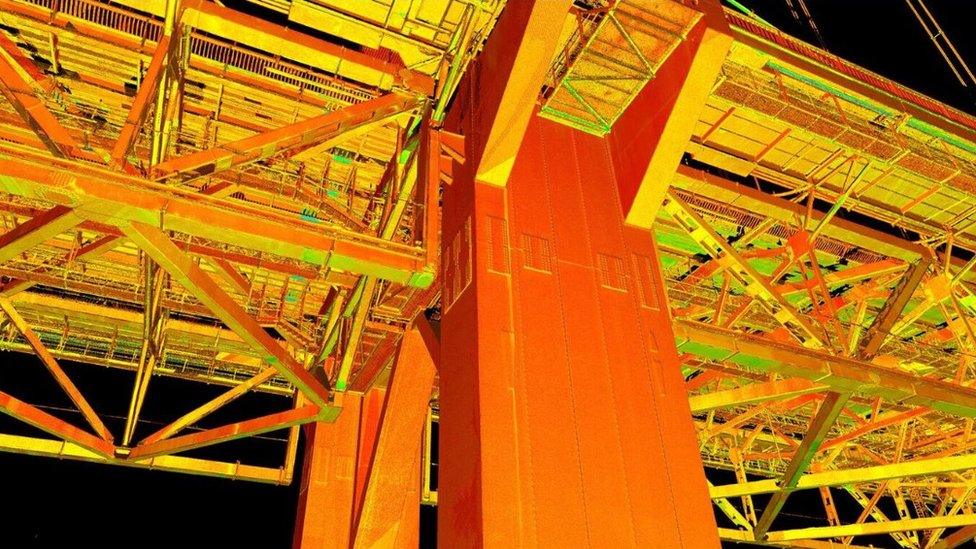
Those involved in the scanning project said it posed "unique challenges"
Alastair Rawlinson, head of data acquisition at The Glasgow School of Art, said: "Laser scanning each of the three bridges has posed unique challenges for our team.
"We have had to use our combined experience, gained through digitally documenting globally iconic structures such as the Sydney Opera House and Mount Rushmore, to create innovative methodologies to allow us to capture these incredible bridges in great detail.
"We will now use this specialised 3D dataset to develop interactive learning resources based on advanced gaming technologies and virtual reality to make the information accessible to school children across Scotland and beyond."
- Published29 October 2014
